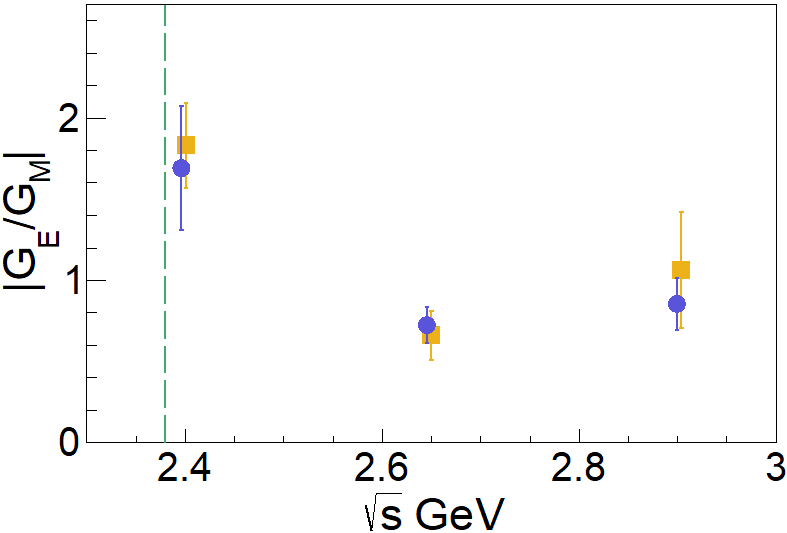The BESIII collaboration recently reported “Determination of the Σ
+ timelike electromagnetic form factors”, which has been published in Physical Review Letters on Feb. 22, 2024 [Phys. Rev. Lett. 132, 081904 (2024)].
The electromagnetic form factors (EMFFs) of baryons are one of the most fundamental physical observables related to the internal electromagnetic distribution of baryons. Due to the difficulties in producing stable hyperon beams, it is challenging to study the EMFFs of hyperons in the spacelike region. The EMFFs of hyperons are usually studied in the timelike region through electron-positron annihilation processes, and these can be related to the spacelike region through dispersion relations. The timelike EMFFs are complex, a complete knowledge of EMFFs includes the electric to magnetic form factor ratio and the relative phase between electric and magnetic form factors. Measuring the relative phase in a broader range of four-momentum transfer is crucial for determining the asymptotic behavior of baryons and studying their dynamical mechanisms. A non-zero relative phase will lead to a transverse polarization of the hyperons that can be determined by the angular distribution from its weak decay. The BESIII experiment, with its unique scan data above the hyperon-antihyperon pair production threshold, provides an ideal platform for complete determination of the hyperon timelike EMFFs.
Based on the collision data collected with the BESIII at center-of-mass energies of 2.3960, 2.6454 and 2.9000 GeV, the complete information of hyperon EMFFs are determined by studying the process e+e- -> Σ+ Σbar- and performing a joint angular distribution analysis. The precision of the electric to magnetic form factor ratio of Σ+ hyperon is improved compared with previous measurements. The relative phase between electric and magnetic form factors is explored for the first time. The results significantly deviate from the theoretical predictions based on the YbarY potential model. The evolution of the relative phase between electric and magnetic form factors will be an important input for understanding its asymptotic behavior and the dynamics of baryons.
Figure: Results for the electric to magnetic form factor ratio |G_E/G_M| (left) and the relative phase ΔΦ (right) for hyperon.
DOI: 10.1103/PhysRevLett.132.081904



